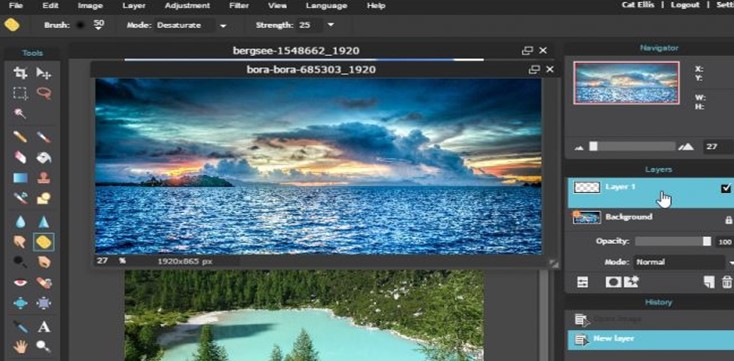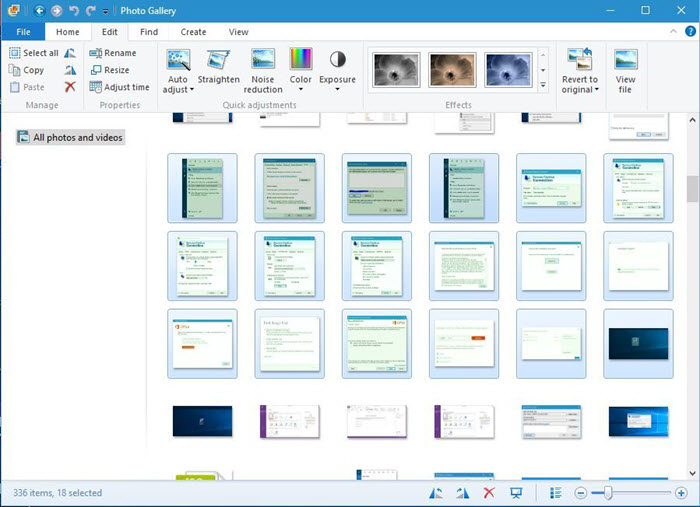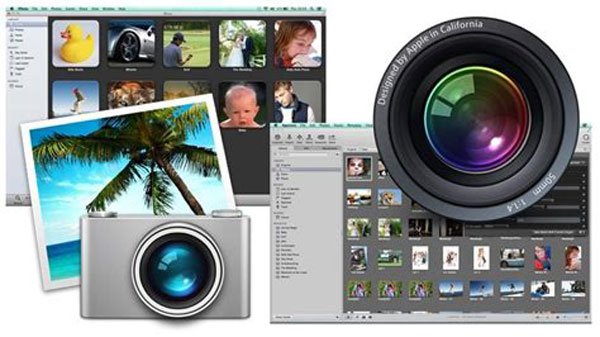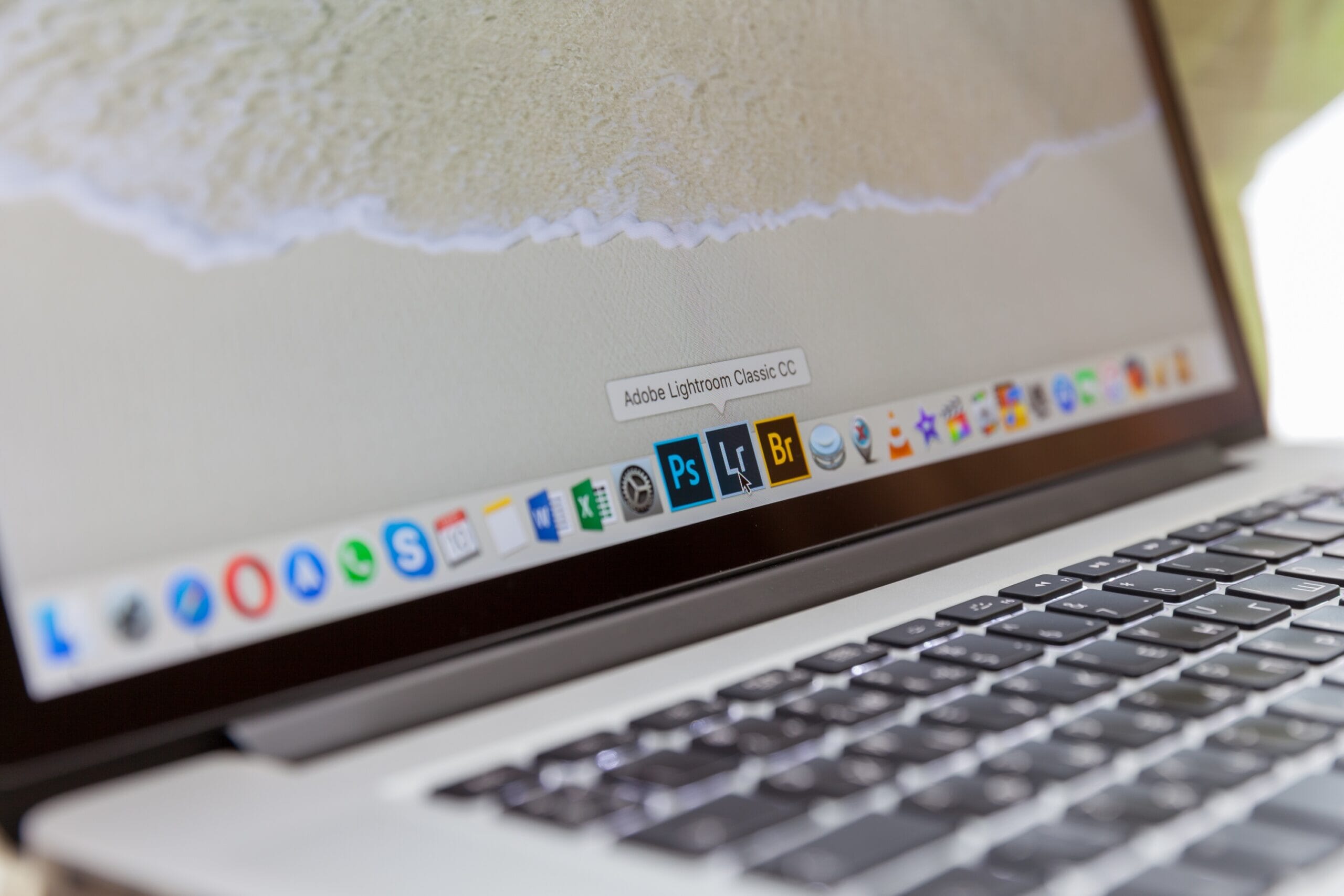Apple's Photos for Mac is great, but it can be limiting. Looking for an alternative photo editor for the Mac? Here's our pick of the best free or low-cost photo editing software for macOS. Full list of the top Digital Photo Software apps that are similar to Apple iPhoto, including PhotoStyler, PhotoSweeper, Visual Watermark, Ephnic Photo Collage for Mac, Blurity, Clarity Wallpaper.
- January 02, 2021
- 18 min to read
Most free photo editors available on the App Store are quite basic, offering just a limited number of filters and allowing you to easily and quickly liven up your photos before posting them on social media.
But if you’re an aspiring or professional photographer, you probably need a more powerful app with a broader set of tools to use your creativity to the fullest. Besides, you probably use your Mac for photo editing because working on a large screen makes it possible to adjust the slightest details.

1. Apple’s Photos (Built-in app)
Apple’s Photos app is included for free on all recently released Macs. It does a good job at organizing your photos, but its collection of photo enhancement tools leaves much to be desired. Hopefully, our selection of the best free programs for photo editing on Mac will help you choose the right app to suit all your creative needs.

2. Luminar (7 days trial)
Luminar is another full-featured photo editor that’s popular with both Mac and Windows users. It can work as a standalone app as well as a plugin for such popular programs as Apple Photos.
Luminar uses Artificial Intelligence to enable sophisticated yet quick photo enhancements. Among these AI features are Sky Enhancer, which adds more depth and detail to the sky in your photos while leaving other areas untouched; Accent AI, which analyzes a photo and automatically applies the best combination of different effects to enhance your image; and Sun Rays, which allows you to place an artificial sun and adjust the lighting to your liking or make the sun rays already in your photo look even more incredible.
Luminar has over 60 filters you can apply to your photos to enhance them in a moment. Luminar also provides a set of powerful tools for cropping, transforming, cloning, erasing, and stamping, along with layers, brushes, and many more incredible features. Luminar supports the Touch Bar on the latest MacBook Pro, making photo editing even more effortless and pleasing.
3. Photolemur 3 (Free Version with watermark)
Photolemur is a relative newcomer on the photo editing market but it has all the chances to win the favor of beginner photographers and hobbyists. Running on Artificial Intelligence, Photolemur is a completely automatic photo enhancer, meaning that it does all the editing for you in no time. It has the simplest interface, with only a few buttons and sliders to adjust the enhancement to your liking and view the before and after results.
Iphoto Alternative Mac Free
All you need to do is choose a photo (or a few) that you want to improve, drag and drop or import them using the Import button, and let the program make enhancements. After it’s done, you can compare the edited version with the original image by using the before–after slider and, if you want, adjust the skin tone or even enlarge the eyes using additional sliders. Pretty easy, huh?
Photolemur also offers a number of impressive styles to touch up your photos and give them a sophisticated and professional look. With this app, you don’t need to stuff your head with photo editing nuances and terms. Just run Photolemur and watch the magic happen!
4. Aurora HDR (14 days trial)
As you probably can tell from the name, Aurora HDR is designed to help photographers enhance their HDR photos, making them even more detailed and beautiful. It’s an ideal tool for editing your photos, with an extensive collection of more than 20 tools including details, tone, mapping, color, glow, and vignette. Each tool has its unique selection of controls to adjust its effects.
Aurora HDR enables you to work with brushes, layers, and masks, and provides a number of automatic AI tools for recognizing and removing noise, enhancing colors, lighting, and details, improving clarity, and adding contrast to dull areas while leaving other areas untouched.
Aurora HDR does a great job dealing with difficult lighting situations and creating full-of-life images while being easy to use.
5. Pixelmator (Trial 30 Days)
Pixelmator is a photo enhancer beloved by many Mac users, as it offers a good combination of a modern and simple interface, the ability to work on multiple layers, and powerful features that take photo editing to a whole new level. With so many editing tools, brushes, and effects, you can enhance your photos to your liking. You can choose between two versions of Pixelmator – standard and pro – depending on your needs. The standard version is great for basic photo editing with its selection of essential tools and filters, while the pro version is packed with extra brushes, tools, and effects that let you push your creativity to new boundaries. You can decide which version is suitable for you according to what features you’re looking for in a photo editing app.
6. Adobe Photoshop Elements 2021 (Trial link)
Photoshop Elements isn’t as affordable as other photo enhancers for beginner photographers. But luckily there’s a trial version available, so you can check it out before deciding whether this app is worthy of your money. Photoshop Elements acquired many powerful features from Photoshop, only Elements is simplified for amateur photographers and enthusiasts. It includes a good number of effects and filters, plus automated editing options for improving lighting, color balance, and exposure, and even opening closed eyes and reducing the effects of camera shake.
In addition to all of these awesome features, Photoshop also offers editing modes for beginners, intermediate users, and experts. Beginners will probably prefer Quick mode, as it focuses on essential tools to quickly enhance your photos by improving color, lighting, and other basic settings. Guided mode provides intermediate users with step-by-step guidance with more professional features like artistic effects, skin tone correction, and background replacement. Expert mode gives you full access to the app’s really powerful editing features and is ideal for creating stunning images.
7. Affinity Photo (Free Trial)
Affinity Photo’s interface may seem overwhelming at first, especially for novices, but when you come to grips with it you’ll find that the app is just what you’ve been looking for. Its numerous professional tools, effects, and filters encourage you to get creative with your photos. Among the coolest features Affinity Photo has to offer is a before and after view to compare the original photo with its edited version.
Affinity Photo works with 15 file types, including common ones like PDF, PSD, JPG, and GIF as well as some less popular ones. The app amazes with its abundance of basic and top-notch editing tools, allowing you to tweak your photos using all possible kinds of instruments. Affinity Photo allows you to edit HDR photos, apply artistic filters and effects, play with masks and layers, and create breathtaking compositions by combining several images in one. If you find its interface a bit much and are afraid of getting lost in all those advanced tools, you should probably look for something more suitable for your level. But Affinity Photo is worth mastering.
8. Google Photos
Google Photos is a popular cloud storage service for photos and videos. It can’t boast countless masterly tools like other photo enhancers that we review in this article, but it includes some fundamental features like filters, color adjustment sliders, and transformation tools.
Although Google Photos may not be that helpful when it comes to editing photos, it does a pretty good job at storing high-resolution images and videos with 15GB of free online storage, compared to iCloud’s mere 5GB (which you can upgrade to 50GB for a monthly fee). If you’re planning to go on a trip and take plenty of photos, then it might be smart to sign up for Google Photos to use that extra storage space when you come back.
9. PhotoScape X (Free)
A relatively new photo editing app, PhotoScape X has been gaining popularity with many Mac and PC users since its release in 2008. Its interface is simple but unconventional, with a number of tabs running along the top of the window. Each is responsible for a specific stage of editing. The Viewer tab allows you to browse and organize your photos. After you pick a photo, you can switch to the Editor tab, which includes a broad set of instruments, filters, and effects and a useful feature that enables you to compare the adjusted photo with the original.
The next tabs, including the Batch tab, mainly concentrate on editing and renaming multiple photos at once. The GIF tab allows you to easily create an animated GIF from a group of selected photos.


The downside of PhotoScape X is a lack of selection tools, so all changes are applied to the whole image rather than to a selected part.
10. Gimp (Free)
Gimp is a free open-source photo editing app that has been on the market for over 22 years and is available for Windows, Mac, and even Linux. Unlike many free apps, Gimp doesn’t have any ads or in-app purchases. Its grey interface might seem a little old-fashioned and it may be a bit sluggish when it comes to complex effects, though.
Gimp offers a vast collection of advanced tools that hardly any free photo editor can boast. It has numerous enhancement options such as clone and heal brushes, layers and channels, accurate selection tools, a number of transformation instruments, and, of course, color adjustment controls. Gimp is one of the most powerful tools for enhancing photos and is beloved by so many users for its price (free) and versatility. But if you can’t come to grips with Gimp’s interface, it may be worth paying some cash for a more user-friendly program.
- About Apple's iPhoto (Mac & iOS Only) iPhoto is multifunction digital photo software developed by Apple Inc. It's pre-installed on every Mac since 2002, as part of the iLife suite, together with iMovie, iDVD, iWeb, GarageBand. IPhone helps you import, edit, organize, print and share photos with ease.
- Download third-party editing extensions from the Mac App Store to add filters and texture effects, use retouching tools, reduce noise, and more. Reset Adjustments When you’ve made an edit, you can judge it against the original by clicking Compare.
[More Tips] Fixes to Common iPhoto Not Working Problems
I bought iPhoto in App Store 03.11.12 for Mountain Lion. When I changet a country in my Apple ID all my previous purchases disappeared from list. Couple of weeks ago I upgraded my OS X to Mavericks and of course I upgraded iPhoto too. But Mavericks works much worse on my Mac, maybe model of my Mac is too old. Download the latest version of iPhoto Library Manager for Mac - Manage multiple iPhoto libraries and find duplicate photos. Read 58 user reviews of iPhoto Library Manager on MacUpdate.
We understand that there are still a lot of users prefer iPhoto and don't want to switch to the above iPhoto alternative or Photos app. When those run into problems with iPhoto, the troubleshooting tips below will help.
Important Note: Before you try any fix below, you're suggested to make a copy of your photos (and the iPhoto application if necessary).
To backup your photos quickly, you may need an iPhoto alternative (free download:Mac version and Windows version) for a while.
Apps Like Photoshop For Mac
#1 iPhoto Not Recognizing iPhone
When users plug iPhone to computer and open iPhoto to transfer some iPhone photos or the like, the iPhoto won't recognize iPhone (7/Plus/6S/SE or earlier) on the sidebar. This iPhoto problem is mostly caused by bad cable or software fault. If iPhone doesn't show up on iPhoto, there are some quick troubleshooting tips to fix it:
1. Restart your computer and try again;
2. Go to Settings and find Passcode Lock, then turn the passcode lock off;
3. Delete all the photos on your phone that are sent by email or downloaded from web;
4. Make sure that there are no other users logged into the Mac at the same time and retry;
5. Try to connect iPhone to Mac using a different USB port;
6. Quite Final Cut or iMovie that may interfere with Photos' ability to recognize the iPhone.
#2 iPhone Photos Not Showing up in iPhoto
Another common iPhoto not working problem is that, the iPhone device is detected on the app's list, but iPhoto won't show up the photos in iPhone. Don't worry if you run into this problem as there are many proved fixes to the problem of photos not showing up in iPhoto:
1. Check if you're using any other photo storage services on your computer like DropBox, if you do, disable or delete them as they may be conflict with iPhoto;
2. Check if you have check trust for the computer to access your phone and photos;
3. If you have trusted the computer but photos still not showing up, then go to Settings on iPhone and switch Auto-Lock function to never;
4. Rebuild your iPhoto Library database if individual photos are not showing up in iPhoto, it you don't know how, check Apple's explanation on how to rebuild iPhoto Library.
#3 Slow iPhoto Problem
It is said that iPhoto will chock on just 10,000 images, and any larger photo library will slow down iPhoto's performance. However, today's camera make it extremely easy to go beyond the 10,000 limit. Note that even if Photos app is released to replace iPhoto and bring better performance, it's still quite slow for large photo library. If you find iPhoto taking forever to import from iPhone, try below:
1. Break your libraries into several libraries every 10,000 photos;
2. Launch iPhoto and hold down the shift, options and command keys, then the Photo Library First Aid window will appear with repair options;
3. Open Terminal and cd by default, cd '~/Pictures/iPhoto Library' and execute the command: for dbase in *.db; do sqlite3 $dbase 'vacuum;';
4. If still the iPhoto is not working or slow, try iPhoto alternative:
Mac iOS has a wonderful app called iPhoto. iPhoto App allows you to import pictures from digital cameras and local storage devices. Most of the Apple users choose iPhoto App to transfer their photos. But, you can only sync pictures from iPhone camera roll with iPhoto. So, if you want to transfer all your photos, Albums then there are many other easy ways. Do you want to import photos from your iPhone to Mac? But the problem is you don’t know the easy way to transfer it without iPhoto. As iPhoto app is there in Mac but except that you want to use another method then what is it? Do not worry as we are here to help you out. Go through the full article and learn How To Import Photos From iPhone To Mac Without iPhoto?
Before we see the methods of importing photos from iPhone to Mac without iPhoto, first let us see the problems while transferring photos through iPhoto App.
Problems on Transferring Photos from iPhone to Mac with iPhoto App
Contents
- How To Import Photos From iPhone To Mac Without iPhoto?
On MacBook and iMac, the iPhoto works well with Mac OS. The Problems we get while transferring photos from iPhone to Mac with iPhoto is:
- When the iPhoto / Photos App is open, the processor gets overheat and reboots the machine because of high CPU usage.
- By default, it creates duplicates of images which are manually added
- The pictures which are stored in the iPhoto app cannot be accessed easily from another program.
- The app will compress the image size on exporting
- When syncing locally stored photos, the iCloud service can’t do it properly
- Photos App does not recognize the iPhone when it is plugged in another Mac OS
- Photos library is 50% bigger in memory size than the iPhoto Library.
Also Read:
Games For Mac
Ways To Import Photos from iPhone To Mac without iPhoto.
- with AnyTrans
- via Email
- Tenorshare iCareFone
- using MobiMover
- using AirDrop
- Image Capture
- with Preview
How To Import Photos From iPhone To Mac Without iPhoto?
Follow the given methods to import Photos from iPhone to Mac without iPhoto.
Method 1: Transfer Photos from iPhone to Mac using AnyTrans Software
Best features of the App are:
- AnyTrans app transfers all the photos from iPhone to Mac and also from Mac to iPhone.
- You get Full control and management on your Photos and also on Camera Roll, Photo Stream, Photo Library and My Albums.
- It supports fast transferring speed through high-efficient batch mode.
Now, check out the step by step guide on transferring photos with AnyTrans App.
- Step 1: First of all download the AnyTrans App and Install it on your Mac.
- Step 2: Then connect your iPhone to Mac via USB Cable.
- Step 3: Click on Photos > Choose one album which you want to transfer
- Step 4: Choose the photos and select them
- Step 5: Now, click on the Computer button.
Method 2: Import Photos from iPhone to Mac without iPhoto via Email
Yes, you can import your iPhone photos to Mac via Email. I believe this is one of the easiest Methods. Use your Email to send iPhone photos to your Mac and then save them from email to Mac. For a few of them, it can be little troublesome, but this is the best option to transfer photos from iPhone to Mac without iPhoto.
Follow the given steps to import Photos from iPhone to Mac via Email.
- On your iPhone, open the Photos App and select the specific Ablum which contains photos which you want to transfer to Mac.
- Click on the “Edit” option and check the photos which you want to transfer
- At the bottom side click on the Share icon and select the “Email” option.
- Enter your Email address and then send the email
- Now, open your Mac and Log in to the Email id
- Open the email which you sent the photos and download the photos from there on your Mac.
This is how you can save photos on Mac from your iPhone through Email. Isn’t the simple way?
Method 3: Transfer Photos From iPhone to Mac Via Tenorshare iCareFone
This is a third-party file transferring tool called Tenorshare iCareFone. It is like an alternative to Mac Photos App. This app works for all iOS devices including iPad and iPod touch. With this app, you can import and export photos, videos, music, contacts, apps, note, and much more. All the quality of the pictures will be original only it won’t get damage. Follow the given steps to import photos from iPhone to Mac.
- First Launch the Tenorshare iCareFone and plug in your iOS device to Mac.
- Then click on the File Manager. You will see 9 files are covered
- Choose Photos and
- Then all the pictures will be displayed on your device just like the original one.
- Now, after selecting the pictures Click on “Export”.
Method 4: Transfer photos from iPhone to Mac using MobiMover
To Import all your iPhone photos to Mac use the Freeware MobiMover app. Install MobiMover on your Mac and then transfer files from iPhone to Mac and from Mac to iPhone. With the help of this app, you can not only transfer photos from iPhone to Mac but also on iPhone to iPhone. Follow the given steps to use MobiMover:
- First, connect your iPhone to your Mac and then connect it via USB Cable
- Open the MobiMover app and choose your iDevice to Mac
- Also can use the custom feature to transfer photos from your iPhone to Mac by clicking on your device name and then on Picture then on Photo/ Album.
- Choose the category which you want to copy from iPhone to Mac.
- You can also transfer videos, audio, contacts, and much more.
- To choose the location for the images click on the folder icon and then click on the Transfer button to transfer photos from your iPhone to Mac
- It may take few minutes to import as it depends on the size of the file.
That’s it! Done.
Method 5: Import Photos from iPhone to Mac Via AirDrop
If you want to know How To Import Photos From iPhone To Mac Without iPhoto? then use AirDrop. With the help of AirDrop, you can import photos without cable. Follow the steps given below:
STEP 1: On your Mac, Turn on AirDrop
- Then go to Finder > Go > AirDrop and on the Bluetooth and Wifi. AirDrop will be on, on your Mac
- Then set the option Allow to be discovered by Everyone or Only Contacts
STEP 2: ON iPhone Turn on AirDrop
- From the bottom of your iPhone screen Swipe up and open Control Center.
- Press on the module where the Airplane Mode is, Tap on AIRDROP and set your iPhone to discover by Contacts Only or Everyone.

STEP 3: Import Photos From iPhone To Mac.
- On your iPhone open Photos App
- Now, select the photos which you want to import from iPhone
- Click on the share button and on the name of your Mac in the AirDrop section
- Import photos from iPhone to Mac without iPhoto.
Method 6: Import Photos from iPhone to Mac With Preview
Preview supports only transferring camera Roll photos. So, if you only want to transfer photos from camera Roll then only this will help. Follow the steps given below.
Iphoto Alternatives
Download Iphoto For Macbook Air
- First, connect your iPhone to Mac with the USB Cable
- Launch the Preview
- Click on file which is at the upper left corner of your screen.
- Choose import from your iPhone
- Choose the photos which you want to transfer by clicking Import or Import all
- Click where you want to transfer iPhone photos.
CONCLUSION:
Download Iphoto App For Mac
However, there are many other ways to import photos from iPhone to Mac. But these are the best app by which you can transfer photos from iPhone to Mac without iPhoto App. If you want to transfer photos from your iPhone to Mac without using iPhoto then follow the given steps. Stay tuned to us for more and latest updates.
Free Iphoto Download For Mac
Also Read: